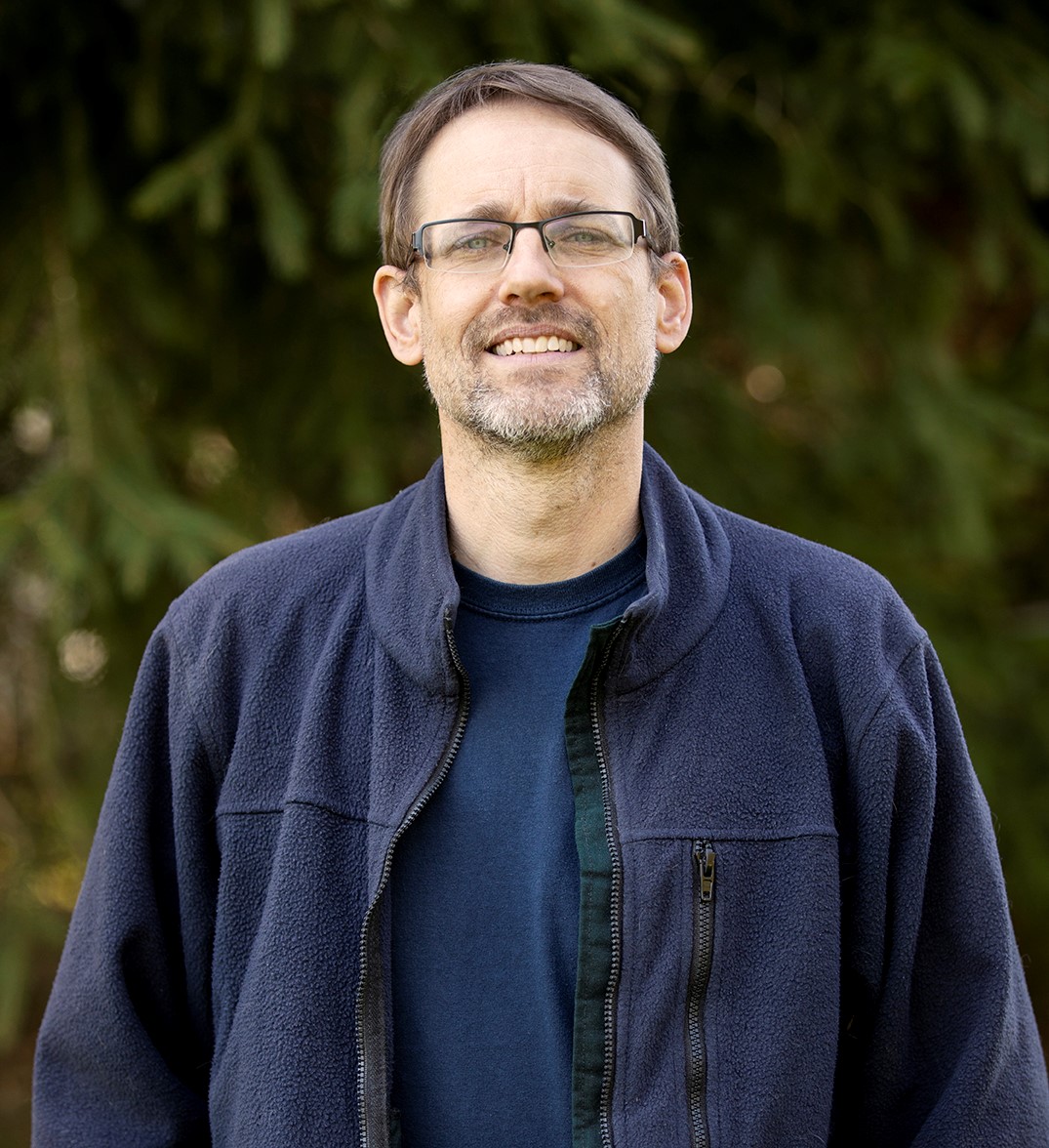
“What does the future hold for Michigan?”
As the director of Michigan State University’s Forestry Innovation Center (FIC), Jesse Randall is consumed by the question. Randall, Ph.D. ’07, bears the torch of Spartan innovation in Michigan’s Upper Peninsula. From his 1,745-acre office in Escanaba, he guides the center as a pivotal hub for forestry research, education and outreach.
Under his watch, the FIC has reinvented itself. Formerly known as the Forest Biomass Innovation Center, the facility underwent a shift in 2020 to better reflect a more comprehensive approach to forestry management and regional development.
“The station had been very dedicated toward wood energy crops—short-rotation woody biomass,” Randall said. “I was asked to come in and reinvent the station, make it broader in terms of its scope. We still look at forestry and wildlife issues, we look at natural forest regeneration, but we have a lot of ongoing projects. We’re blending the past and the present.”
Two of the station’s greatest areas of focus are maple syrup production and Christmas trees. Through federal funding, expert research and the support of MSU, the FIC is quickly becoming an international leader in these efforts, but the change has not happened over night.
Randall is the station’s second director since its founding in 1986. He earned his bachelor’s degree in natural resources from Cornell University and worked 11 years in education and extension at Iowa State. He joined MSU’s Ph.D. program in forestry and silviculture in 1999, spending much of his Spartan education in the U.P. collecting field data and gaining valuable experience in a state defined by its abundant forests.
Michigan is one of the most heavily forested states in the country. Over 100 species of trees are part of nearly 20 million acres covering 53% of the state’s land. The U.P. in particular has built a thriving culture and economy around timber and forestry products to the tune of $26 billion annually.
“Michigan has some of the best trees in the world,” Randall said. “We’re unique. We have a thriving primary and secondary market with a lot of investment in our wood products, but how do we sustain that industry? We lose more trees each year to insects, disease and old age than are harvested for that $26 billion. That means we have a lot of room to grow.”
As director of the FIC, Randall is excited to tap into that growth. Though trust with local partners takes time to build, MSU is carving out a reputation among the maple syrup community by taking a scientific rather than a technology-driven approach to the production process. Research focuses on improved tree health and sap yield, efficient collection, novel applications and sustainability in a rapidly changing environment.
“Michigan State is pushing the bounds of traditional maple research,” Randall said. “The U.P. is the sleeping giant of the maple world. We have more tappable trees than all of Vermont, New Hampshire and Maine combined. So, we’re trying to build our local producer capacity and get a better understanding of how to fit into the global economy.”
The same applies to the FIC’s work with Christmas trees. Around 2,000 trees are planted each year as part of the station’s quickly expanding arboreal infrastructure. The trees take 10-12 years to fully mature—the first crop is still a few years away from that milestone—producing a varied cohort for study. Michigan ranks top three in the country for live cut Christmas trees and the market is only growing as consumer demand rises.
“We want to be there and ready to work with researchers. There’s a lot of input that goes into it, but if you don’t have it, they won’t come here,” Randall said. “We want researchers working on Michigan State ground and answering questions for our producers.”
In short, the FIC is developing into a hub for research and innovation with an impact that reaches globally. From biomass energy to wildlife management, from maple syrup to Christmas trees, Randall sees Michigan State as a forestry leader in efficiency, sustainability and production.
“Across the board, trees are an environmental answer,” Randall said. “Any time you plant a tree, it has an impact. It’s going to sequester carbon, it produces oxygen, it’s roots hold the soil, it improves water quality and filtering—the whole nine yards.
“We sit at the table of a $26 billion industry. We have a huge influence.”
The Michigan State Forestry Innovation Center is online! Check out the center’s Facebook page and Yooper Forestry YouTube account for instructional videos and live maple syrup making demonstrations.